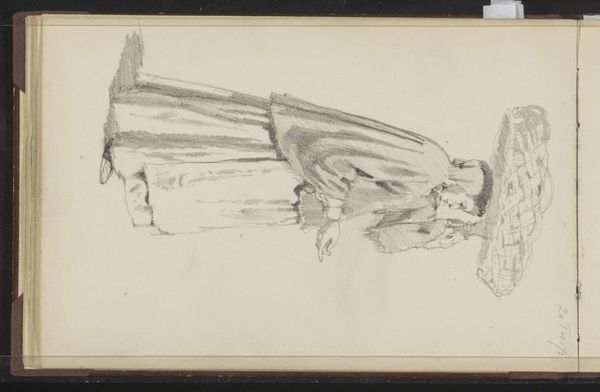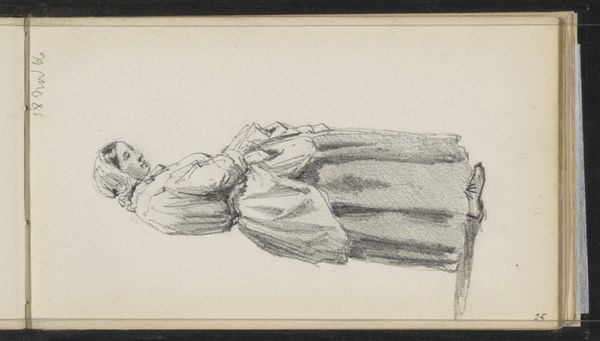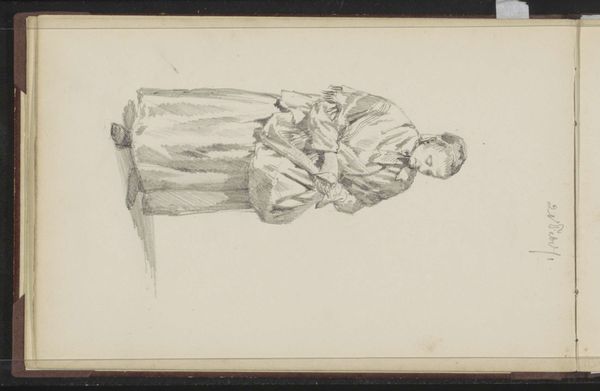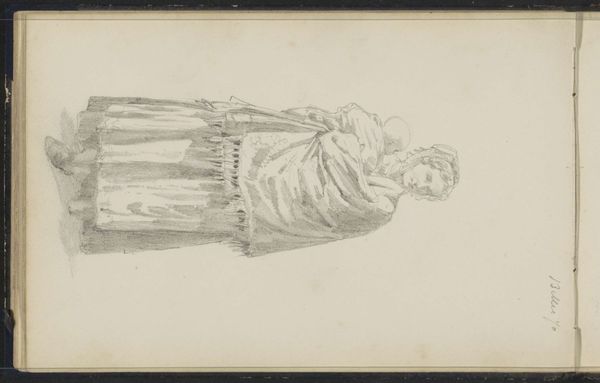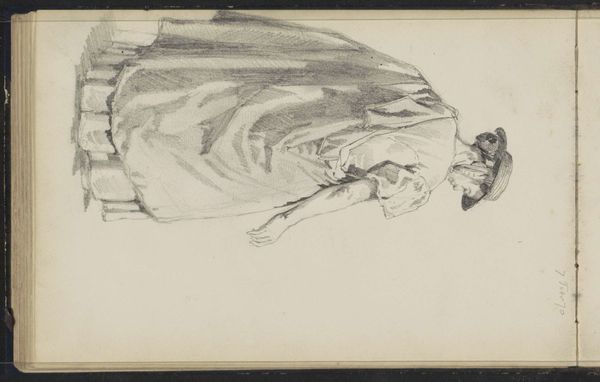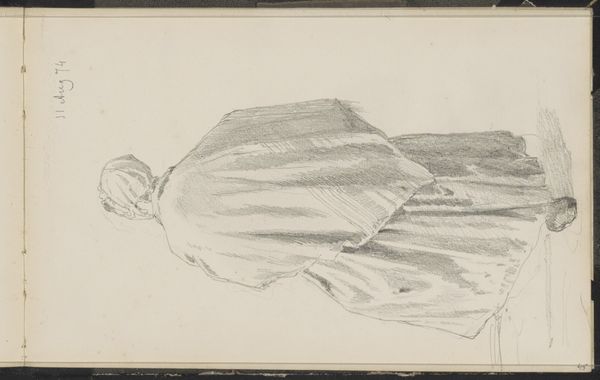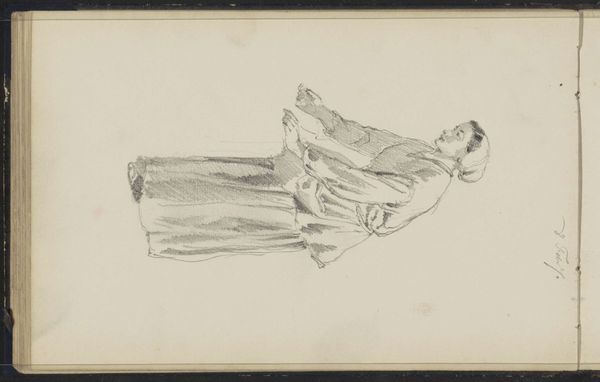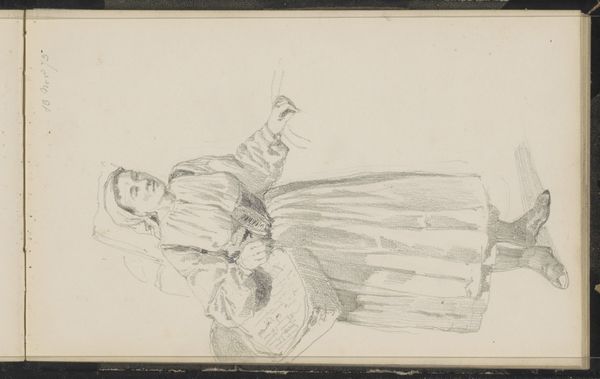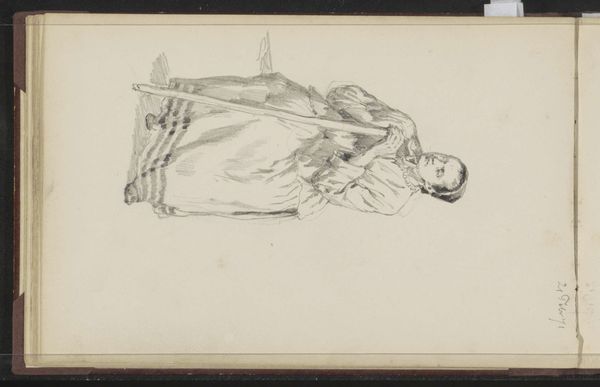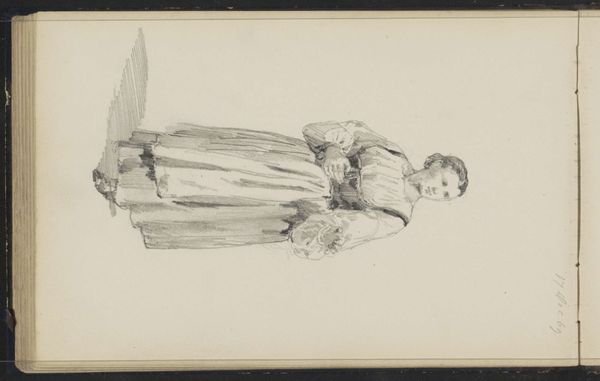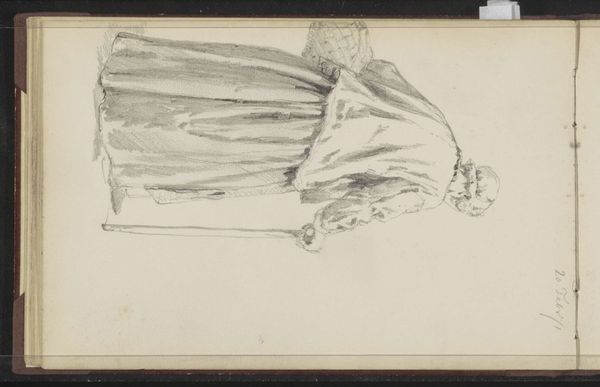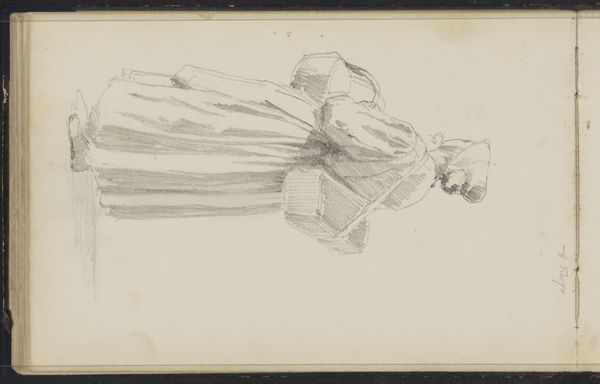
drawing, paper, pencil
#
portrait
#
drawing
#
figuration
#
paper
#
pencil drawing
#
pencil
#
realism
Copyright: Rijks Museum: Open Domain
Curator: Here we have "Vrouw met een mand," or "Woman with a Basket," a pencil drawing on paper, possibly from 1871-1872, by Cornelis Springer, found right here in the Rijksmuseum. Editor: The first thing that strikes me is how understated and quiet it feels. The shading is so delicate, it's like a whisper of a drawing. Curator: Well, let's consider what it took to produce this piece. The accessibility of pencil and paper allowed for quick studies of everyday life, as opposed to the commissioned portraits of the wealthy that dominated earlier eras. This drawing exemplifies how emerging markets influenced art production, opening up a space to focus on more quotidian subjects like this working woman. Editor: I love that, you’re totally right; there is such a grace in the simple pose. It’s not romanticized; she is standing there solid as a tree with her basket, grounded in the present moment, whatever it might hold for her. I wonder about the basket, though, what's inside? Eggs? Laundry? The stuff of daily life? Curator: Exactly. The basket isn't just a prop, it's crucial to understanding the woman's place in the social fabric. The materials would have likely been sourced locally and woven by craftspeople often overlooked by history. Her labor and its relationship to this object reflect broader economic realities of the time. Editor: You know, her averted gaze suggests something to me… almost a shyness, a wish to disappear into the background, to remain unseen. I think the drawing gives her that space, but on her terms. The act of creating the drawing gives her agency where maybe she felt none. Curator: Absolutely. It’s also important to look at how this drawing exists as a study; it most likely represents preliminary work toward a painting and that it may speak to the academic practice in the 19th century. Editor: Looking at it now, it's not just about the social history, it’s about a moment held tenderly in graphite. A moment of simple existence. That’s beautiful in its own way. Curator: It certainly provides valuable insights into the artist's process and how everyday objects contribute meaning beyond aesthetics. Editor: Indeed, making you wonder who else Springer might have seen, maybe, that one fleeting instant, and immortalized with his pencil.
Comments
No comments
Be the first to comment and join the conversation on the ultimate creative platform.
